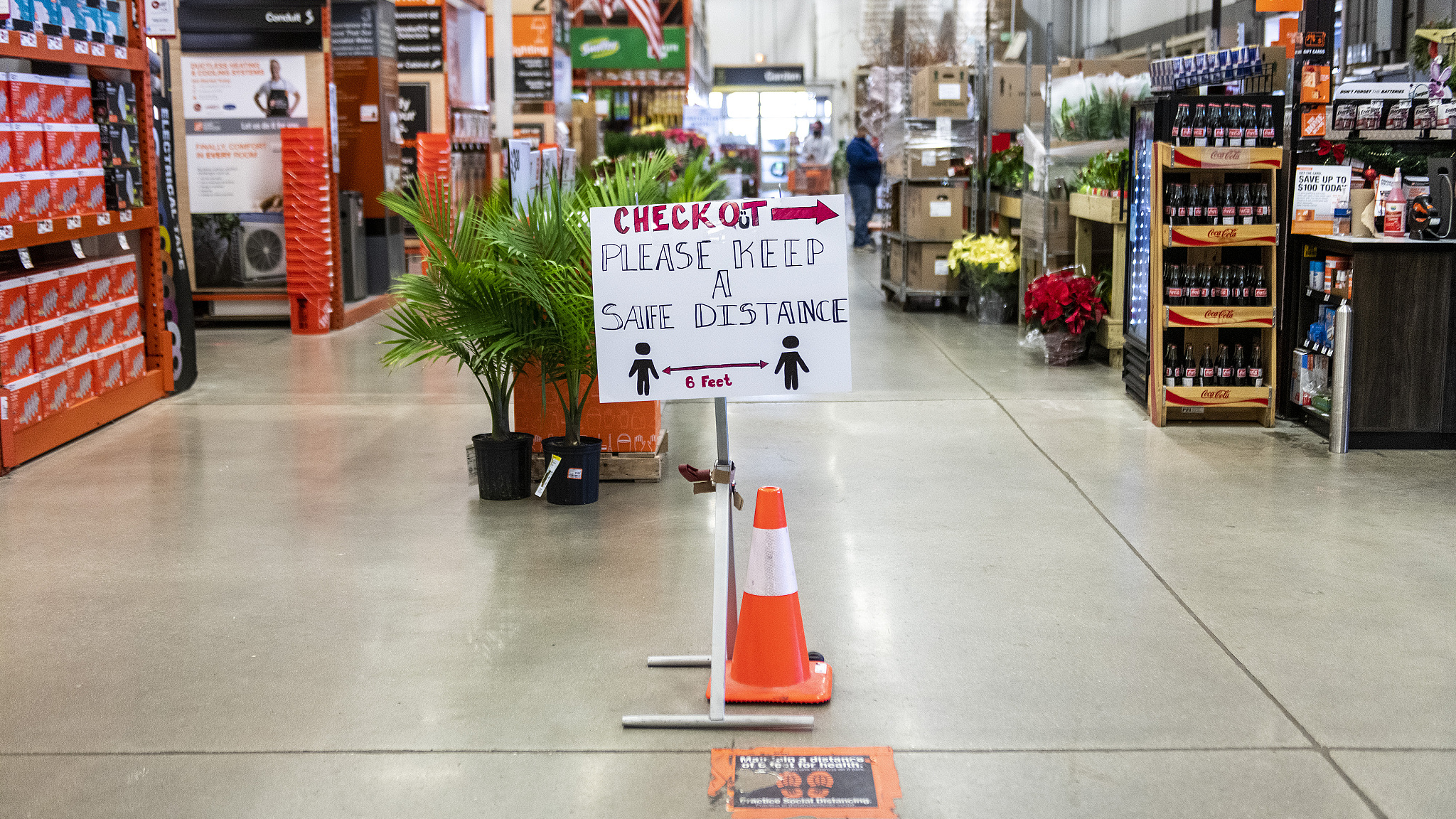
A sign notifies customers to social distancing when in line to check out at a store in Chicago, Illinois, U.S., November 23, 2020. /CFP
A sign notifies customers to social distancing when in line to check out at a store in Chicago, Illinois, U.S., November 23, 2020. /CFP
A model developed by Washington University in St. Louis predicted that the number of COVID-19 cases in the U.S. could reach 20 million by January 20, when the presidential inauguration will take place, nearly doubling the current number of over 12 million, CNN reported on Monday.
The forecast was published in the Nature journal's Scientific Reports on Monday. The university said the same model had "accurately forecast the rate of COVID-19 growth over the summer of 2020."
The model underscored the importance of social distancing, as it demonstrates even small increases in social distancing would largely affect the evolution of the pandemic.
Compared with the social distancing level before the pandemic, the current level suggests a 60 percent return to normalcy.
The authors cautioned that if the country continued the current trajectory, "the model forecasts that we are likely to reach 20 million cases before the end of January 2021," but if "going back to a 50 percent return to normalcy, which was the average level of distancing in early August," the country would likely see 5 million fewer cases by that time.
They added that a return to the social distancing level in April could help the country "effectively squash out the COVID growth within a few weeks."
However, the researchers said the estimate is conservative, as the model assumed that only 10 percent of cases are diagnosed, while the recent rate has probably climbed to 25 percent. "In that case, total COVID cases would increase beyond 20 million in the next few months unless we, as a society, engage in more social distancing."
They are also concerned about the upcoming holiday season when people travel more. It may lead to an even worse situation than the forecast.

